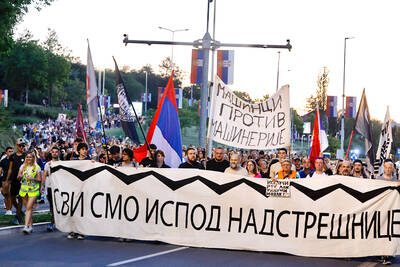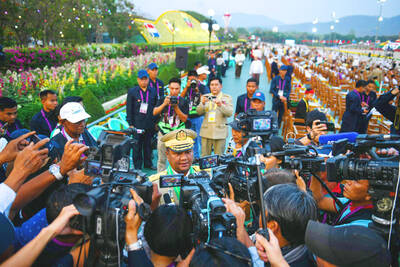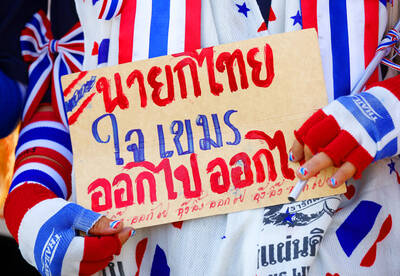For generations, its sharp and unmistakeable sound has struck fear into Scotland’s enemies, emboldened its troops in battle and helped define its national identity. Every year, tourists in their tens of thousands flock to Edinburgh Castle to applaud the pipe bands of Scotland’s regiments.
But contrary to popular myth, the great Highland bagpipe never led the Scots clans into battle against the English, nor did kilted pipers carry them around the castles of Highland chieftains.
In fact, says a new history by a leading authority on the much loved — and loathed — instrument, the Highland bagpipe was invented less than 200 years ago, primarily for urban audiences. And what’s more, it was largely created using money from wealthy Scots emigres living in London.
In a book to be published by the National Museums of Scotland, Bagpipes — a National Collection of a National Instrument, Hugh Cheape, a Gaelic historian and expert piper, argues that the origins of the instrument have been confused by mythology and deliberate invention.
Like most tartan regalia and the modern kilt, the great Highland bagpipe and many of its traditions known worldwide were manufactured by the Scots middle classes in the early 1800s in their romantic quest to rediscover their past.
Until the battle of Culloden in 1745 ended the Jacobite rebellion by the Highland chieftains led by Bonnie Prince Charlie, clan chiefs were great patrons of piping and pipe music; cultivating new musical styles, sponsoring musicians who founded piping dynasties and colleges.
But that rich musical culture was devastated by the Jacobite defeat. In 1778 educated and wealthy expatriate Scots living in London founded the highly influential Highland Society of London with the core aim of “preserving the martial spirits, language, dress, music and antiquities of the ancient Caledonians.”
The society set up piping competitions and commissioned pipes as prizes from two well-established pipe makers in Edinburgh — Hugh Robertson and Donald MacDonald. Cheape credits them with creating the Great Highland Bagpipe in the early 1800s.
The mythology surrounding the great Highland pipes increased when allegedly authentic pipes linked to great events in Scottish history were given to national museums. Many, Cheape says, are fake.
One set allegedly played at the Battle of Waterloo in 1815 includes 20th century parts. He is scathing about the pipes allegedly played at the battles of Culloden in 1745 and at Flodden in 1513.
“The bagpipe in Scotland has suffered a malaise of misunderstanding and misinterpretation, of misappropriation and manipulation of a lively and vital musical culture. Its treatment might even serve as a metaphor for Scottish history and culture since the 18th century,” he writes.

Eleven people, including a former minister, were arrested in Serbia on Friday over a train station disaster in which 16 people died. The concrete canopy of the newly renovated station in the northern city of Novi Sad collapsed on Nov. 1, 2024 in a disaster widely blamed on corruption and poor oversight. It sparked a wave of student-led protests and led to the resignation of then-Serbian prime minister Milos Vucevic and the fall of his government. The public prosecutor’s office in Novi Sad opened an investigation into the accident and deaths. In February, the public prosecutor’s office for organized crime opened another probe into

RISING RACISM: A Japanese group called on China to assure safety in the country, while the Chinese embassy in Tokyo urged action against a ‘surge in xenophobia’ A Japanese woman living in China was attacked and injured by a man in a subway station in Suzhou, China, Japanese media said, hours after two Chinese men were seriously injured in violence in Tokyo. The attacks on Thursday raised concern about xenophobic sentiment in China and Japan that have been blamed for assaults in both countries. It was the third attack involving Japanese living in China since last year. In the two previous cases in China, Chinese authorities have insisted they were isolated incidents. Japanese broadcaster NHK did not identify the woman injured in Suzhou by name, but, citing the Japanese

RESTRUCTURE: Myanmar’s military has ended emergency rule and announced plans for elections in December, but critics said the move aims to entrench junta control Myanmar’s military government announced on Thursday that it was ending the state of emergency declared after it seized power in 2021 and would restructure administrative bodies to prepare for the new election at the end of the year. However, the polls planned for an unspecified date in December face serious obstacles, including a civil war raging over most of the country and pledges by opponents of the military rule to derail the election because they believe it can be neither free nor fair. Under the restructuring, Myanmar’s junta chief Min Aung Hlaing is giving up two posts, but would stay at the

YELLOW SHIRTS: Many protesters were associated with pro-royalist groups that had previously supported the ouster of Paetongtarn’s father, Thaksin, in 2006 Protesters rallied on Saturday in the Thai capital to demand the resignation of court-suspended Thai Prime Minister Paetongtarn Shinawatra and in support of the armed forces following a violent border dispute with Cambodia that killed more than three dozen people and displaced more than 260,000. Gathered at Bangkok’s Victory Monument despite soaring temperatures, many sang patriotic songs and listened to speeches denouncing Paetongtarn and her father, former Thai prime minister Thaksin Shinawatra, and voiced their backing of the country’s army, which has always retained substantial power in the Southeast Asian country. Police said there were about 2,000 protesters by mid-afternoon, although